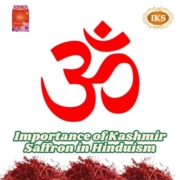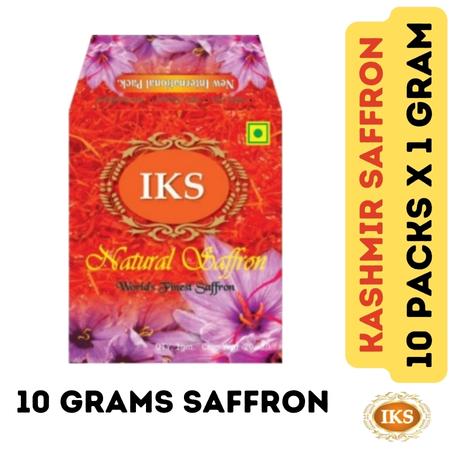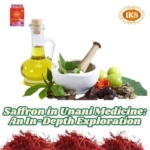Importance of Kashmir Saffron in Hinduism: The Rich and Sacred History
Importance of Kashmir Saffron in Hinduism: The Rich and Sacred History
Importance of Kashmir Saffron in Hinduism – Kashmir saffron, known scientifically as Crocus sativus, is one of the most revered spices in the world. Beyond its culinary uses, it holds significant cultural and spiritual importance, particularly in Hinduism.
This article explores the various dimensions of Kashmir saffron in the context of Hindu beliefs and practices, highlighting its historical, medicinal, and spiritual significance.
🌼 Experience the Divine Flavor of Kashmir Saffron! Buy Now! 🛒
Understanding Kashmir Saffron
What is Kashmir Saffron?
Kashmiri Kesar is derived from the flower of the saffron crocus, which blooms in the mountainous regions of Kashmir. This spice is renowned for its rich flavor, vibrant color, and numerous health benefits.
The labor-intensive process of harvesting saffron, which involves hand-picking the delicate stigma from the flowers, contributes to its high value.
Historical Significance
The history of saffron cultivation in Kashmir dates back over a thousand years. It was introduced to the region by Persian traders and has since become an integral part of Kashmiri culture and heritage.
Historical texts and religious scriptures mention saffron as a symbol of purity and prosperity, making it an essential element in various rituals and ceremonies.
Saffron in Hindu Rituals and Ceremonies
Spiritual Symbolism
- Saffron holds a profound spiritual significance in Hinduism, often regarded as a symbol of purity, sacredness, and spiritual enlightenment. The vibrant hues of saffron, particularly its characteristic yellow-orange color, are emblematic of the sun, which is revered in many Hindu traditions as a source of life and energy. This association with the sun suggests the illumination of the mind and spirit, enhancing clarity and awareness.
- In Hindu belief, saffron is thought to possess the power to purify both the mind and body. This purification process is crucial for spiritual practices, as it prepares practitioners for meditation, prayer, and other rituals. When consumed or applied during rituals, saffron is believed to help individuals connect with higher realms of consciousness, allowing them to engage in deeper spiritual exploration and understanding.
- Moreover, saffron is often used in the preparation of sacred waters or tirtha, which are sprinkled on devotees during ceremonies. This act symbolizes the cleansing of negative energies and the bestowal of divine blessings, further emphasizing saffron’s role in fostering spiritual growth and enlightenment.
Use in Religious Offerings
- Saffron plays a vital role in various Hindu rituals and ceremonies, particularly in pujas (worship rituals). It is a common practice to include saffron as an offering to deities. The spice is often mixed with milk, yogurt, or ghee, creating a sacred concoction that is used for anointing idols or images of gods. This ritual is known as abhisheka.
- The use of saffron in abhisheka is deeply symbolic; it signifies devotion and reverence towards the divine. The act of applying saffron to the idols is believed to invite blessings and grace from the deities, enhancing the spiritual ambiance of the ritual. In many households, saffron is regarded as a sattvic (pure) ingredient, which is essential for maintaining the sanctity of religious offerings.
- In addition to its use in abhisheka, saffron is also included in havan (fire rituals) where offerings are made to the sacred fire. The aroma of burning saffron adds a divine fragrance to the ceremony, enhancing the spiritual atmosphere and signifying the invocation of divine energies.
✨ Elevate Your Rituals with Sacred Saffron! Don’t Wait, Buy Now! 🌟
Saffron in Hindu Festivals and Celebrations
Saffron’s significance is especially pronounced during major Hindu festivals and celebrations such as Diwali, Holi, and Navratri. During these occasions, saffron is used in a variety of traditional dishes and offerings, contributing to the festive spirit and cultural richness of the celebrations.
- Diwali – During Diwali, the festival of lights, saffron is often used in sweets and dishes such as kheer (rice pudding) and laddus. The inclusion of saffron in these delicacies symbolizes abundance and the sharing of prosperity among family and friends. The vibrant color of saffron is also thought to invoke joy and positivity, aligning with the festival’s themes of victory over darkness and the celebration of knowledge.
- Holi – In the festival of Holi, which celebrates the arrival of spring and the triumph of good over evil, saffron is used in various thandai (a traditional milk-based drink) recipes. The use of saffron in Holi festivities not only enhances the flavor and color of the drink but also signifies the joy and vitality associated with the festival. It represents the spirit of togetherness and the sharing of blessings among loved ones.
- Navratri – During Navratri, a nine-night festival dedicated to the worship of the goddess Durga, saffron is often used in prasad (food offered to deities). The dishes prepared during this time are not only delicious but also carry spiritual significance. Saffron’s presence in these offerings signifies the devotion and respect of devotees towards the divine feminine, enhancing the overall spiritual experience of the festival.
Overall, saffron’s role in Hindu rituals and ceremonies is multifaceted, serving as a powerful symbol of purity, devotion, and spiritual connection. Its inclusion in various religious practices enriches the cultural heritage of Hinduism, making saffron an invaluable element in the celebration of faith and spirituality.
🌞 Unlock the Secrets of Spirituality with Kashmir Saffron! Shop Now! 🔑
The Role of Kashmir Saffron in Hindu Culinary Traditions
Kashmir saffron is not only celebrated for its unique flavor and vibrant color but also for its deep-rooted significance in Hindu culinary traditions. Its use extends beyond mere flavor enhancement; saffron embodies cultural values, spiritual meanings, and a sense of community.
Saffron in Traditional Dishes
Kashmir saffron is a key ingredient in a variety of traditional Hindu dishes, where it enhances the taste, aroma, and visual appeal. The spice’s distinctive flavor profile and rich golden hue make it a favored choice in many culinary preparations, particularly during festivals and special occasions.
- Halwa – Halwa, a popular sweet dish, often incorporates saffron to elevate its taste and color. Made from semolina, flour, or lentils, and cooked with ghee, sugar, and nuts, saffron adds a luxurious touch to halwa, making it a revered dessert during celebrations. The infusion of saffron not only enhances the flavor but also creates a visually stunning dish, symbolizing richness and festivity.
- Kheer – beloved dish that features saffron is kheer, a traditional rice pudding made with milk, sugar, and nuts. Saffron is added to kheer to impart its distinct flavor and golden hue, transforming a simple dish into a royal delicacy. Kheer is often prepared during religious ceremonies and family gatherings, where its sweetness signifies joy and prosperity.
- Motichoor Ladoo – Motichoor ladoo, a sweet made from tiny gram flour balls fried in ghee and mixed with sugar syrup, is another dish where saffron plays a pivotal role. The addition of saffron not only enhances its taste but also adds a beautiful color, making the ladoos visually appealing and inviting. These sweet treats are particularly popular during festivals and weddings, symbolizing celebration and abundance.
🙏 Invoke Blessings with the Purity of Kashmir Saffron! Get Yours Now! 💫
Significance of Saffron in Offerings
In Hinduism, the significance of saffron extends beyond its use in culinary creations; it plays a crucial role in religious offerings, known as prasad. Prasad refers to food that is offered to deities during pujas and rituals, and saffron is often included as a key ingredient in these sacred dishes.
- Elevating the Sacredness of Offerings – The inclusion of saffron in prasad is deeply symbolic. It signifies respect and devotion towards the deities, transforming the dish into a sacred offering that is believed to carry blessings. When saffron is added to prasad, it enhances not only the flavor but also the spiritual significance of the food, making it more deserving of being presented to the divine.
- Sharing Blessings with the Community – After the offerings are made, prasad is distributed among devotees and community members. Sharing prasad, especially those made with saffron, signifies the sharing of blessings, prosperity, and goodwill. This act fosters a sense of community and togetherness, reinforcing the belief that saffron-infused prasad carries divine favor and blessings, which are then shared among all.
- Symbol of Abundance and Prosperity – Saffron is often associated with abundance and prosperity in Hindu culture. By including zaffran in prasad, devotees express their wishes for a bountiful life and spiritual fulfillment. The act of preparing and offering saffron-laden dishes is a way of invoking divine blessings and expressing gratitude for the abundance one receives.
10 GRAMS 100% PURE ORIGINAL AUTHENTIC PREMIUM TOP BEST HIGH QUALITY A+++ GRADE IKS KASHMIRI SAFFRON (KESAR / KUMKUMA PUVVU / KUNGUMAPOO / KUMKUMPUVVU / ZAFFRAN) FOR HINDUISM
Conclusion
Kashmir saffron is much more than just a spice; it is a symbol of spiritual significance, cultural heritage, and health benefits in Hinduism. Its role in rituals, culinary traditions, and medicinal practices underscores its importance in the lives of many Hindus. As time progresses, the reverence for Kashmir saffron continues to flourish, reflecting the rich tapestry of beliefs and practices that define Hindu culture.
The significance of Kashmir saffron in Hinduism encapsulates a blend of spirituality, tradition, and health, making it an invaluable part of the cultural identity of Hindus around the world. As we celebrate and acknowledge its importance, we also honor the labor and dedication of those who cultivate this precious spice in the beautiful valleys of Kashmir.








Leave a Reply
Want to join the discussion?Feel free to contribute!